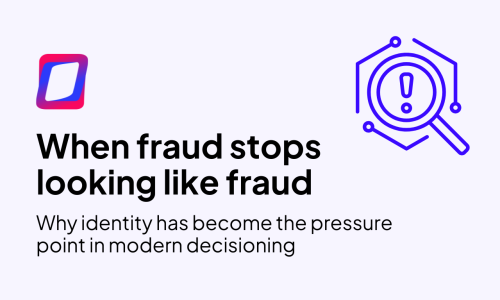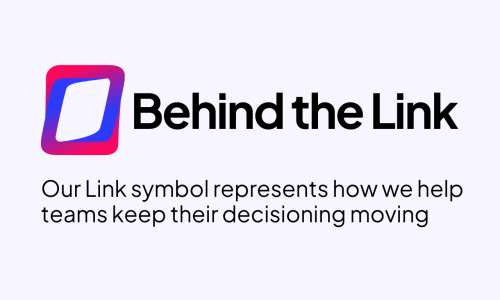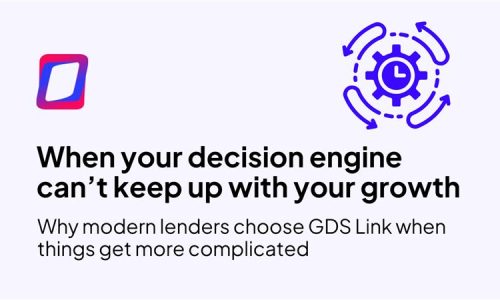How AI Is Fueling Fraud and Helping Stop It
AI Isn’t the enemy, ignoring it is
By Nathan George, Partnerships, North America, GDS Link
I recently sat down with Darren Thomas, Director of Data Solutions, and Justin Davis, VP of Product at Point Predictive, for a fireside chat about the real fraud challenges facing lenders today. No buzzwords. No empty hype. Just a raw, practical conversation about how fraudsters are using AI, how you can use it too, and what actually works in the fight to protect your portfolio.
If you’re still treating fraud prevention as a check box prior to the credit decision, you’re already behind.
45 Percent. That’s the Number.
According to Point Predictive’s latest research, synthetic and credit washing fraud accounted for 45 percent of all fraud in U.S. auto lending last year. Not five. Not fifteen. Forty-five.
And this isn’t just organized crime rings with deep pockets and sophisticated networks. It’s everyday people using TikTok tutorials and Telegram bots to buy stolen SSNs, generate fake pay stubs, and wash their credit. Justin described how these synthetic identities get built and rebuilt, often around the same stolen identity, using AI-generated documents and dispute letters. The result is a borrower who looks like a prime credit score on paper but behaves like a subprime default risk.
“You’re not just underwriting a credit score,” Justin said. “You’re underwriting a lie.”
AI Is Fueling the Fire. But It’s Also the Firehose.
From AI-generated income documents to real-time face swapping during selfie checks, fraudsters are using generative tools to manipulate data at scale. And they’re doing it faster than most lenders can react. But the same technology that gives fraudsters the upper hand can also be used to fight back.
Darren laid out a few must-haves for any lender serious about using AI for prevention:
- Track the trend, not just the ID. Applications with slight variations in names, addresses, or income should raise flags. AI can detect these patterns across multiple submissions and institutions.
- Dig deeper into how scores are built. If the score is based on authorized user tradelines and a single $500 credit card, that’s not a real profile. That’s a synthetic.
- Don’t rely on static models. Fraud moves fast. Your fraud model needs to be refreshed often. At Point Predictive, they retrain every six months. Anything less risks missing the wave.
What About First-Party Fraud?
This one hits a little closer to home. First-party fraud often involves real borrowers with real SSNs who simply lie on their applications. Some might inflate their income to get a better rate. Others never intended to repay the loan. Either way, it’s fraud.
“If someone misrepresents a material fact and you suffer a loss because of it, that’s fraud,” Justin said. “It doesn’t matter if they meant to pay you back or not.”
AI is playing a role here, too. Fake documents are easier than ever to generate. However, lenders can counter by using early payment defaults as a proxy for fraud. According to Justin, charge-offs in the first six months often signal fraud that slipped through at origination.
Face-to-Face Doesn’t Mean Fraud-Free
Even in branch locations and dealerships, fraud is showing up in person. Synthetics are walking in with fake documents. In some cases, Justin explained, the dealership is part of the problem. Whether intentionally or through negligence, they’re helping bad loans get approved.
Understanding the risk at your distribution points is just as important as understanding the risk of the applicant.
“If you don’t know where fraud is coming from, you can’t stop it,” he said.
Testing, Learning, and Getting Ahead
When asked how lenders can roll out fraud tools without blowing up their current workflow, Darren and Justin were clear. Start with your data. Understand what you have, how clean it is, and identify your biggest gaps.
Start by defining your fraud problem. Every institution has its own interpretation of what qualifies as fraud, but without a consistent definition, it’s nearly impossible to measure or improve. Once you’ve established that foundation, ease into new strategies gradually. Instead of deploying a fraud score across your entire portfolio on day one, begin with a targeted approach, such as testing on the tails, layering it into your existing decision-making process, and utilizing early payment defaults and detection feedback loops to refine your strategy as you progress.
And make sure you’re working with risk solution providers, like GDS Link, who know how to guide you through that process. As Justin put it, “It’s not just about the tool. It’s about the plan.”
Use AI. Don’t Wait to Be Burned.
Fraud isn’t standing still. It’s faster, more scalable, and harder to spot than it used to be, but it’s not unstoppable. AI gives lenders a real chance to stay ahead, not by chasing trends, but by acting on real-time signals before the damage is done.
As Justin put it, fraud doesn’t have to be a cost of doing business. It’s something you can stop, if you know where to look and what to do next.
Watch the full conversation. Fireside Chat: AI Hype, Fraud Reality, and the Fixes That Actually Work
About Nathan George
Nathan leads the development of GDS Link’s partnership framework and channel sales strategy, driving revenue growth and client retention. He focuses on streamlining partner engagement, onboarding, and performance tracking to scale the program and unlock new revenue opportunities.
Follow Nathan on LinkedIn.
Looking for more on how to connect fraud prevention with smarter credit risk strategies? Check out our latest guide: The Real Risk Equation.
Fraud is moving fast, and borrowers won’t wait. With $12.5B in fraud losses and 40% of applicants abandoning clunky applications, siloed fraud and credit checks just don’t cut it anymore.
Download the guide to see how smarter risk starts before you click “approve.”
Recent articles

When Fraud Stops Looking Like Fraud
Read article
Behind the Link
Read article





